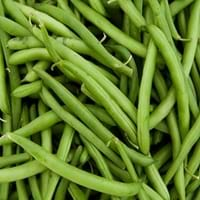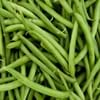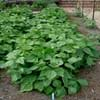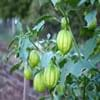Life Span
Annual
Biennial and Perennial
Origin
Central America, South America
Europe, Western Asia
Types
Golden Wax Bean, Romano bean
Not Available
Number of Varieties
Not Available
Habitat
Fields, orchards
waste ground, wastelands
USDA Hardiness Zone
Not Available
4-9
AHS Heat Zone
Not Available
7-1
Sunset Zone
A1, A2, A3, H1, H2, 1a, 1b, 2a, 2b, 3a, 3b, 4, 5, 6, 7, 8, 9, 10, 11, 12, 13, 14, 15, 16, 17, 18, 19, 20, 21, 22, 23, 24
A1, A2, A3, H1, H2, 1a, 1b, 2a, 2b, 3a, 3b, 4, 5, 6, 7, 8, 9, 10, 11, 12, 13, 14, 15, 16, 17, 18, 19, 20, 21, 22, 23, 24
Habit
Vining/Climbing
Rosette/Stemless
Flower Color
White, Pink, Lavender
Yellow
Flower Color Modifier
Bicolor
Bicolor
Fruit Color
White, Green, Dark Red, Tan, Black
Brown, Black
Leaf Color in Spring
Green, Purple, Dark Green
Green
Leaf Color in Summer
Green, Dark Green
Green
Leaf Color in Fall
Green, Dark Green
Green
Leaf Color in Winter
Not Available
Not Available
Leaf Shape
Maple shaped
Pinnate
Plant Season
Spring, Summer, Fall
Summer
Sunlight
Full Sun
Full Sun
Type of Soil
Loam, Sand
Loam
The pH of Soil
Neutral, Alkaline
Neutral
Soil Drainage
Well drained
Well drained
Bloom Time
Indeterminate
Summer
Tolerances
Drought
Drought
Where to Plant?
Container, Ground
Ground, Pot
How to Plant?
Seedlings
Seedlings
Plant Maintenance
Medium
Medium
Watering Requirements
Do not let dry out between waterings, Use Mulches to help prevent water loss during hot and windy weather
Average Water Needs, Do Not over Water, Keep the ground moist but not water-logged
In Summer
Lots of watering
Lots of watering
In Spring
Moderate
Moderate
In Winter
Average Water
Average Water
Soil pH
Neutral, Alkaline
Neutral
Soil Type
Loam, Sand
Loam
Soil Drainage Capacity
Well drained
Well drained
Sun Exposure
Full Sun
Full Sun
Pruning
Remove damaged leaves, Remove dead branches, Remove dead leaves
Remove damaged leaves, Remove dead branches, Remove dead leaves
Fertilizers
All-Purpose Liquid Fertilizer
All-Purpose Liquid Fertilizer
Pests and Diseases
Red blotch
Aphids, Armyworm, Cutworms, Downy mildew, Pitch canker, Red blotch
Plant Tolerance
Drought
Drought
Flower Petal Number
Single
Not Available
Fragrant Bark/Stem
No
Yes
Foliage Texture
Coarse
Fine
Foliage Sheen
Matte
Matte
Attracts
Aphids, Birds, Butterflies, Caterpillar
Butterflies
Allergy
Diarrhea, Irritation to stomach
Stomach burn
Aesthetic Uses
Not Used For Aesthetic Purpose
Not Used For Aesthetic Purpose
Beauty Benefits
Making cosmetics, Remove blemishes
Blood purifying, Good for skin
Environmental Uses
Food for animals, No fertilizer, pesticides, or herbicides needed
Air purification
Medicinal Uses
Acne, Diuretic, Emmoiliant, Menstrual Disorders
Aphrodisiac
Part of Plant Used
Fruits
Root
Other Uses
Animal Feed, Used as a nutritious food item
Food for animals, Used as a nutritious food item
Used As Indoor Plant
Yes
Yes
Used As Outdoor Plant
Yes
Yes
Garden Design
Edible, Herb, Vegetable, Vine
Edible, Herb, Vegetable
Botanical Name
PHASEOLUS vulgaris
PASTINACA sativa
Common Name
Green Beans
Parsnip
In German
Bohnen
Pastinake
In French
haricots
Panais
In Spanish
Green Beans
Chirivía
In Greek
φασόλια
Είδος δαυκίου
In Portuguese
feijões
cherivia
In Polish
fasola
Pasternak
Phylum
Spermatophyta
Magnoliophyta
Class
Magnoliopsida
Magnoliopsida
Clade
Dicotyledonous
Angiosperms, Asterids, Eudicots
Tribe
Not Available
Not Available
Subfamily
Not Available
Not Available
Number of Species
Not Available
Season and Care of Green Bean and Parsnip
Season and care of Green Bean and Parsnip is important to know. While considering everything about Green Bean and Parsnip Care, growing season is an essential factor. Green Bean season is Spring, Summer and Fall and Parsnip season is Spring, Summer and Fall. The type of soil for Green Bean is Loam, Sand and for Parsnip is Loam while the PH of soil for Green Bean is Neutral, Alkaline and for Parsnip is Neutral.
Green Bean and Parsnip Physical Information
Green Bean and Parsnip physical information is very important for comparison. Green Bean height is 30.00 cm and width 30.00 cm whereas Parsnip height is 15.20 cm and width 7.60 cm. The color specification of Green Bean and Parsnip are as follows:
Green Bean flower color: White, Pink and Lavender
Green Bean leaf color: Green, Purple and Dark Green
Parsnip flower color: Yellow
- Parsnip leaf color: Green
Care of Green Bean and Parsnip
Care of Green Bean and Parsnip include pruning, fertilizers, watering etc. Green Bean pruning is done Remove damaged leaves, Remove dead branches and Remove dead leaves and Parsnip pruning is done Remove damaged leaves, Remove dead branches and Remove dead leaves. In summer Green Bean needs Lots of watering and in winter, it needs Average Water. Whereas, in summer Parsnip needs Lots of watering and in winter, it needs Average Water.





